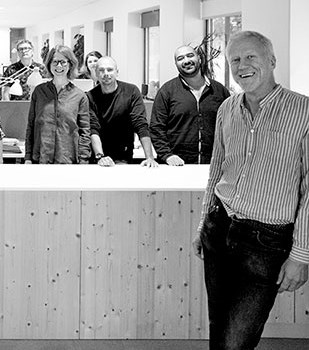VÄXJÖ, SWEDEN Sagging and vibrations in the floor structure are something one notices as soon as one enters a room. It may be a feeling of slight give in the floor or more tangible vibrations that can be felt, heard or seen as objects rattle or shake.
The greater sensitivity to human movement of wooden floor structures, compared with concrete floors, for example, is due to the low mass. Vibration properties can be improved by increasing the mass, stiffness or damping performance.
Increasing the mass may also mean increasing the stiffness, so that the natural frequency does not drop to an unacceptable level (for wooden floor structures <8 Hz). It is thus perhaps not the most cost-effective measure. Increased mass is not always desirable for transport reasons or when, for production reasons, one does not want to use wet overlays. Improving vibration-damping performance is effective, but it is difficult to predict and guarantee the effects of integrated damping solutions, since the whole structure of the building contributes to the overall effect.
The most practical solution is to increase the stiffness of the floor structure. For wooden floor structures, which usually have much greater stiffness in the load-bearing direction than perpendicular to it, measures that increase perpendicular stiffness quickly have a positive effect on vibration-damping performance. Using composite wood products such as plywood or cross laminated timber as the sheet material increases the stiffness in both directions, particularly at right-angles to the direction of the load bearing. Tying the load-bearing beams together laterally with one or more rows of noggings substantially improves the vibration-damping performance. Since the vibration movements are small, it is important that the noggings are fixed firmly to the beams, so that there are no gaps between them. In addition to addressing the stiffness of the floor structure, it is important to consider the supports on which the floor is resting, whether it is a solid, unbroken wall or a sagging beam that might make the vibrations worse.
Ensuring vibration-damping performance that meets users’ expectations is essential for the happiness of the residents. Remember that a vibration-sensitive floor is revealed as soon as someone steps on it.


























